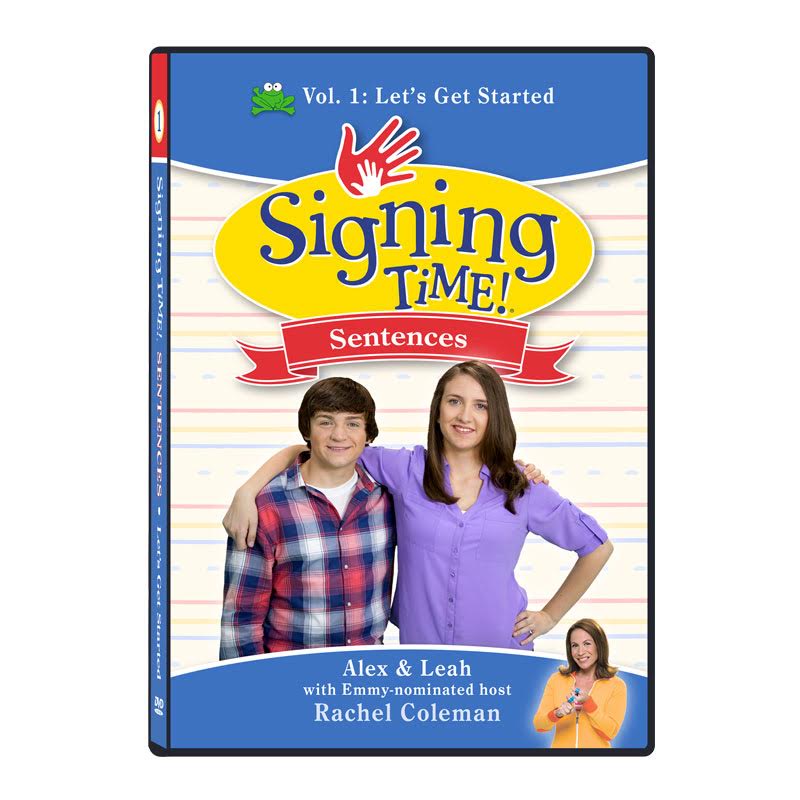
It's so fun when signing with your little one sparks a desire to learn more American Sign Language. I was hooked after learning the alphabet and a few songs from my Kindergarten teacher! One of the reasons I picked Biola for my undergrad was because they offered ASL courses to meet my foreign language requirement. One of my good friends and I had so much fun doing "silent" coffee dates to practice signing together. :)
If you're looking for a way to learn more beyond Baby Signing Time, there are a lot of options...
1) You can check out a local community college. The benefit here is being able to see the signs and practice them in person. If your professor is deaf or teaches with their "voice off," you get more of an "immersion" experience. You're able to see many peoples' signing styles, and can be corrected if you're signing something wrong without meaning to. You can ask questions, get feedback, and even learn more about deaf culture in your area. Plus, you'll likely be challenged with assignments that get you out of your comfort zone by visiting deaf events in your area so you can REALLY practice. :) (Deaf people are incredibly gracious and friendly--and are happy to see hearing people learning their language--so you don't have to worry about striking up a conversation!)
2) Take a course online. Right now I'm taking a course through Signing Online for my Advanced Signing Time Instructor certification. (I'm currently certified to teach 0-5 year olds, but this "upgrade" will allow me to teach all ages, as well as train teachers on how to teach and use ASL in their classrooms.) The lessons are quick, and my 4 1/2 year old daughter daughter even loves doing the quizzes with me. They're $75 per course, and they can count for high school or college credits. I like that I can do these during Ellie's quiet times or after she's in bed, and can learn ASL in my pajamas!
3) Utilize the many resources available to you. One of my favorite websites is LifePrint. It's run by Dr. Bill Vicars, an ASL professor at California State University, and it has a wealth of information and resources on signs, ASL grammar, and deaf culture. You can start with his First 100 Signs, or jump right into his 30 FREE lessons!
The other resource I of course LOVE for learning to sign on your own is Signing Time! Yes, the episodes and songs are designed for 1-8 year olds, but that just means they're easy to learn from! :) Get that library card if you don't have one already, and search for Signing Time DVDs in your local library's online catalog. That way you can place the different volumes on hold to pick up at your nearest library. (You can also purchase favorite episodes from me, but the library is a great way to "try before you buy.") Note that there are 13 volumes in Series 1, and 13 volumes in Series 2, and they can be watched in any order (though I'd recommend sticking to Series 1 first and then moving to Series 2). Also, some PBS stations are still airing Signing Time (depending on where you live), and Series 2 currently has clips on Netflix! And don't forget you can get Series 1 Volume 13 for free--just scroll to the bottom of this post for the link!
*Hint: Check out the Signing Time Progress Charts or the Buyer's Guide to find which signs are taught in each volume.
Once you've learned the 1,000+ vocabulary signs taught in the Signing Time episodes, you can learn ASL grammar from their new series, Signing Time Sentences! The first volume teaches you how to introduce yourself in ASL, ask questions, how to fingerspell, use classifiers, and a bunch more. I love how Hopkins the Frog rearranges English sentences on the screen to show what they would be in ASL. Plus I love that it has two play modes--one where Leah's voice is off. And of course it's not Signing Time without some catchy songs written by Rachel and her dad! Rachel, Alex, and Leah are currently filming the second ST Sentences episode, and the third one has started funding. So exciting! View a preview of the first episode here. (Because it's still new, I haven't seen it in libraries yet, but you can email me to order a copy.)
More Resources...
There are many other things out there that can help you learn to sign. It always helps to check a few resources when learning a new sign so you can learn the different variations, or find out which one is most commonly used. More websites I like for looking up signs (other than www.lifeprint.com) are www.signingsavvy.com, www.handspeak.com, and of course... www.signingtime.com/dictionary. Some books are helpful tools for learning ASL grammar as well, but because it's hard to learn a sign just from a picture and description, I'd just use that as a supplement. Make sure to read the reviews, and also double check to make sure it's ASL and not SEE (Signed Exact English). I used "Signing Naturally" in college, and another friend used "A Basic Course American Sign Language" for her college course.
--------------------------
Well there you have it! Hope this helps you along your signing journey, and remember that I love hearing how it's coming along! Shoot me an email or post on the Little Sign of Mine Facebook page. :) Feel free to comment below with your tips on learning to sign, too.